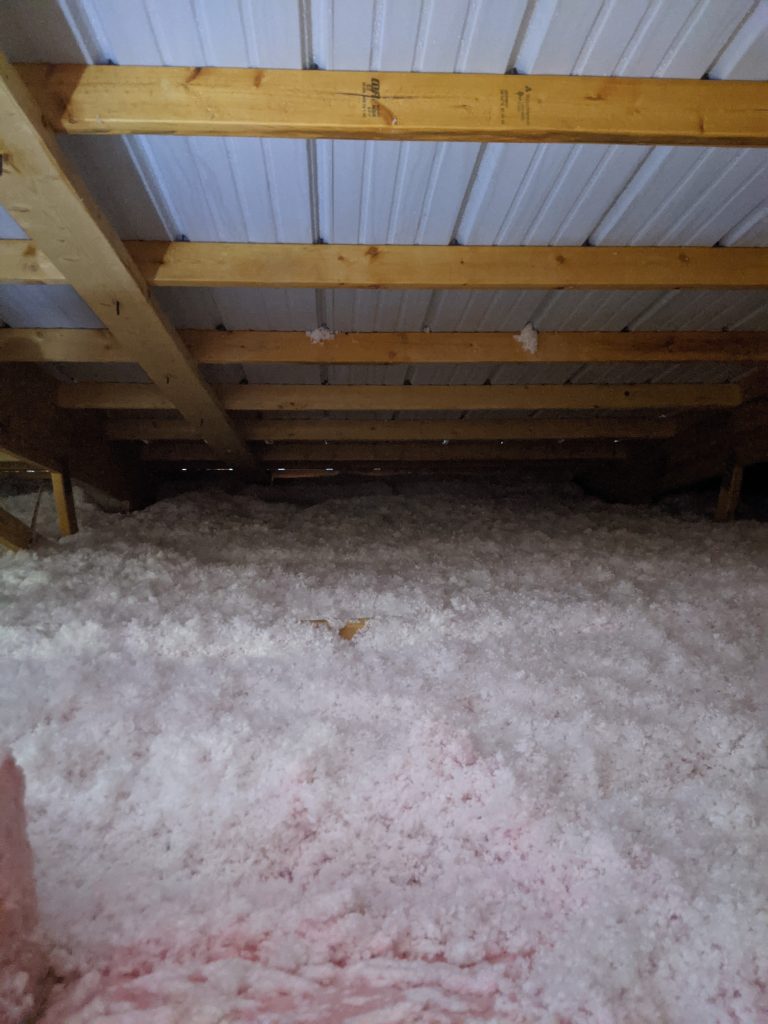Are you planning to build a barndominium? It’s an excellent choice for those who want to have a spacious and unique living space. However, one of the challenges of having a barndominium is keeping moisture out. Moisture can cause a lot of damage, from mold growth to wood rot. In this article, we will discuss some tips and tricks to keep your barndominium moisture-free.
Moisture is a common problem in barndominiums, especially during the construction phase. The high humidity levels and the lack of proper ventilation can cause moisture to accumulate, leading to various problems. However, with the right techniques, you can prevent moisture from becoming an issue in your barndominium. Whether you are in the planning stage or have already built your barndominium, this article will provide you with valuable information to keep moisture out.

How to Keep Moisture Out of a Barndominium?
If you are living in a barndominium or considering building one, you might be aware of the challenges it can pose to keep moisture out. Moisture can lead to mold, mildew, and rot, which can severely damage the structure of your barndominium. In this article, we will discuss some effective ways to keep moisture out of your barndominium.
1. Proper Ventilation
One of the primary ways to prevent moisture buildup in your barndominium is to ensure proper ventilation. Proper ventilation will allow air to circulate freely, reducing the humidity levels that can cause mold and mildew to grow. You can install exhaust fans, roof vents, and windows to provide adequate ventilation. You can also consider using a dehumidifier to remove excess moisture from the air.
2. Proper Insulation
Proper insulation is essential to keeping your barndominium dry and moisture-free. Insulation helps to regulate the temperature and prevent condensation from forming. You can use spray foam insulation or fiberglass batt insulation to ensure proper insulation.
3. Sealant
Sealing your barndominium is another effective way to keep moisture out. You can use a high-quality sealant to seal all the gaps and cracks in your walls, roof, and foundation. This will prevent moisture from seeping in and causing damage.
4. Proper Drainage
Proper drainage is crucial to keep moisture out of your barndominium. You can install gutters and downspouts to direct water away from your barndominium. You can also ensure that the ground surrounding your barndominium slopes away from the structure to prevent water from pooling around the foundation.
5. Use of Moisture-resistant Materials
Using moisture-resistant materials in your barndominium can help prevent moisture buildup. You can use materials like pressure-treated wood, vinyl siding, and metal roofing that are resistant to moisture and can withstand harsh weather conditions.
6. Regular Maintenance
Regular maintenance is essential to prevent moisture buildup in your barndominium. You should inspect your barndominium regularly for any signs of moisture damage and address them immediately. You should also clean your gutters and downspouts regularly to ensure proper drainage.
7. Proper Landscaping
Proper landscaping can also help prevent moisture buildup in your barndominium. You should ensure that the soil around your barndominium is well-drained and does not retain moisture. You should also avoid planting trees and shrubs too close to your barndominium, as their roots can penetrate the foundation and cause moisture damage.
8. Use of Vapor Barriers
Using vapor barriers is another effective way to prevent moisture buildup in your barndominium. You can install a vapor barrier in your walls and ceiling to prevent moisture from seeping in. This will help regulate the temperature and prevent condensation from forming.
9. Proper Airflow
Proper airflow is essential to keep moisture out of your barndominium. You should ensure that the air inside your barndominium is circulating freely to prevent moisture buildup. You can install ceiling fans or use portable fans to ensure proper airflow.
10. Seek Professional Help
If you are struggling to keep moisture out of your barndominium, you should seek professional help. A professional contractor can inspect your barndominium and provide effective solutions to prevent moisture buildup. They can also help you choose the right materials and ventilation system to keep your barndominium dry and moisture-free.
In conclusion, keeping moisture out of your barndominium is essential to prevent damage to the structure and ensure a comfortable living space. By following the tips mentioned above, you can effectively keep moisture out and enjoy your barndominium for years to come.
Frequently Asked Questions
What are the common causes of moisture in a barndominium?
Moisture can seep into a barndominium through various sources, including rainwater, humidity, and condensation. Poor insulation and ventilation can also contribute to moisture buildup inside the structure.
To prevent moisture from entering your barndominium, it is important to seal any gaps or cracks in the building’s exterior. This can be done by using weatherstripping, caulking, or sealant. Additionally, installing a vapor barrier can help prevent moisture from seeping in through the walls.
How can I improve ventilation in my barndominium?
Proper ventilation is crucial for preventing moisture buildup in a barndominium. You can improve ventilation by installing exhaust fans in the kitchen and bathrooms. You may also consider adding vents or louvers to the walls or roof of the building to increase air circulation.
It is important to ensure that the ventilation system is properly sized for the size of your barndominium. You may want to consult with a professional to determine the best ventilation system for your specific needs.
What type of insulation is best for preventing moisture buildup?
Fiberglass insulation is a common choice for preventing moisture buildup in a barndominium. This type of insulation is designed to repel water and prevent moisture from seeping in through the walls.
Another option is closed-cell spray foam insulation, which creates an airtight seal that can prevent moisture from entering the building. However, this type of insulation can be more expensive than fiberglass.
How often should I check for moisture in my barndominium?
It is important to regularly check for moisture buildup in your barndominium to prevent mold and mildew growth. You should inspect the building’s interior and exterior for any signs of water damage, such as discoloration or musty odors.
You may also want to invest in a moisture meter, which can detect moisture levels in the walls and floors of your barndominium. It is recommended to check for moisture at least once a year, or more frequently if you live in an area with high humidity or frequent rainfall.
What should I do if I discover moisture in my barndominium?
If you discover moisture buildup in your barndominium, it is important to address the issue as soon as possible. The first step is to identify the source of the moisture and take steps to prevent it from getting worse.
You may need to replace damaged insulation or install a dehumidifier to remove excess moisture from the air. In severe cases, you may need to hire a professional to repair any structural damage caused by the moisture.
Moisture PROBLEMS?! | Insulating Our Pole Barn
In conclusion, keeping moisture out of your barndominium is essential to maintaining a safe and healthy living environment. With the right techniques and tools, you can prevent moisture from damaging your property and causing potential health hazards.
One effective way to keep moisture out is by properly sealing all windows, doors, and any other openings in your barndominium. This can be achieved by using weatherstripping or caulking to prevent any water from seeping through.
Additionally, installing a proper ventilation system can also help reduce moisture levels inside your barndominium. This can be accomplished by installing vents in the roof or walls to allow for proper air circulation.
By implementing these techniques, you can ensure that your barndominium remains free from moisture, preventing any potential damage and ensuring a safe and comfortable living environment for you and your loved ones.
